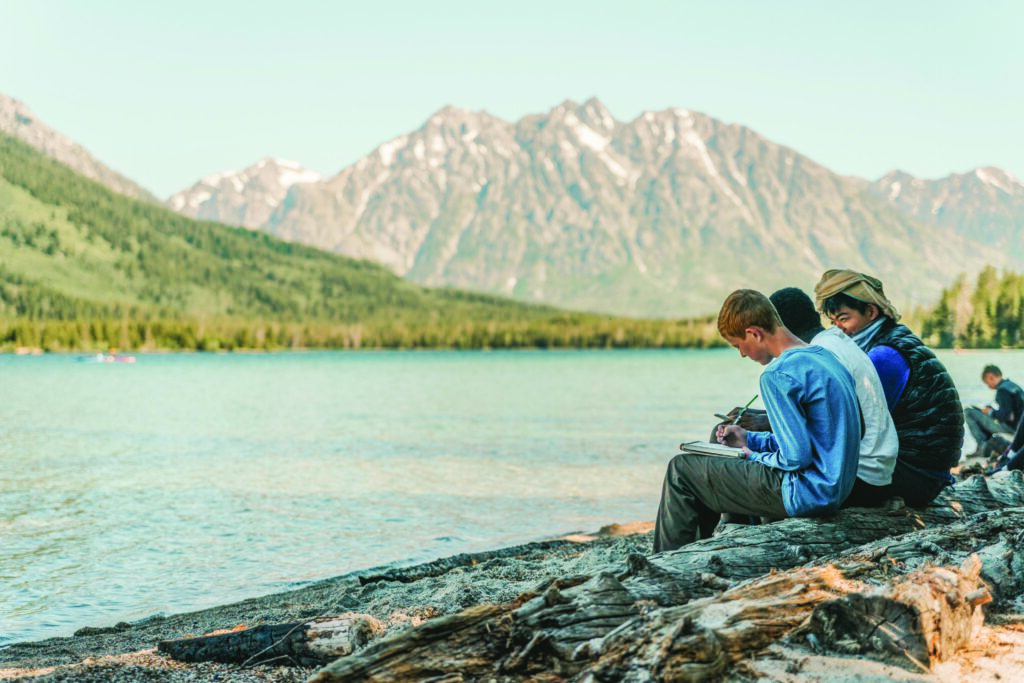It’s no secret that the end of the school year is one of the busiest, most stressful times of year for teachers, parents and students. It’s the time of year for testing and final projects; for events, prom, and end-of-year celebrations; for grading and parent-teacher conferences; and let’s not forget the allure of good weather and summer vacation. The home stretch can feel like…well, a stretch (mentally, physically, emotionally) and it can be easy for students and teachers to unintentionally slide into the summer mindset earlier than the final bell.
At the same time, the last few weeks of school can be a time to engage in some truly memorable and impactful activities that will leave all parties stepping into summer with a little more positivity and purpose. We put a list together of our favorite place-based activities to ease your end-of-year stress. Through these activities you can finish your year with reflection and intention…and have some fun, too!
Make time for Unstructured Play or Mindfulness Practice
An understanding of self is a starting point to understanding place. And what better way to tap into awareness of self than allowing the mind and body to explore freely? Through unstructured play, learners have the freedom to explore, create and discover without predetermined rules or guidelines, fostering things like creativity, imagination, problem-solving abilities and social skills along the way. It’s also just plain fun! Likewise, mindfulness activities allow students to develop internal tools to self-regulate, adapt and find calmness within the chaos.
Tip: Use this as an opportunity to get students outside if it’s available. Visit a local park or explore your own school grounds. Lead a guided meditation or yoga class.
Place-Based Principle: Local to Global Context
Design a Scavenger Hunt
Scavenger hunts are a great way for learners to engage with their communities and dive deeper into their place. They’re also a fun way for students to gain valuable leadership and organization skills. In figuring out what time, materials, mentors and partners they need to support their plans (and how to get them), students take ownership of their “hunt” and learn important practices when it comes to accountability and collaboration.
Tip: Have students help in the design of the scavenger hunt card. Here are a few place-based examples you could have them include:
- Gather a family recipe from a neighbor. Write it down. Bonus points if you make it!
- Take a photo of yourself in something other than a mirror
- Collect a business card from a local, small business. Bonus! Find out the inspiration the owner had for opening their business.
Place-Based Design Principle: Community as Classroom
Conduct Local Interviews
All discoveries, whether in science, social studies, language, or the arts, were sparked by thoughtful questions in response to observations of the world. By having students conduct interviews, they will engage in a variety of conversations, gain perspective on different questions, and discover new questions they didn’t even know they had! It is a chance to get out in the community, hear other ideas and opinions, and gain compassion and empathy towards their fellow community members. It is one step towards investigating place and making an impact.
Tip: Have students reflect on the purpose of their interviews by asking them the question: Why is this interview relevant to me, my community, or the world? Once their “Why” is understood, have them develop their interview questions, make contact with their interviewee(s), and get out into the community.
Place-Based Design Principle: Inquiry-Based
Create a Local Tour Guide
Having students become tourists in their own town is a great way for them to gain a better understanding of the people caring about, celebrating, and even improving their place. It’s also personally relevant and helps them tap into their local economy, ecology and culture. As summer approaches, getting students thinking about their local place can also open windows for exploration and engagement when summer vacation finally commences, especially if they’re expecting visitors!
Tip: Have students answer the following questions:
- If you were a tour guide for your town, where would you take visitors?
- Who would you have them meet?
- Are there specific businesses unique to your place?
- Where would they eat?
- What cool facts, stories, or history would you share with them?
Once they’ve compiled their list, have them design their guide. Each destination, activity, story or piece of history should be paired with short description and students can choose how to present their guide (powerpoint presentation, illustrated book, etc.).
Place-Based Design Principle: Learner-Centered & Interdisciplinary Approach
Do a Mini Community Impact Project
You don’t have to invest a lot of time, energy, and resources to make a difference in your community. Mini community impact projects can pack a punch! Inquiry and design thinking will help students generate ideas and come up with a plan. Then, as a class, you can focus on developing one idea to make a meaningful impact in short amount of time. Really. Many impactful projects can be completed in 15-60 minutes.
Tip: Have students brainstorm about their community’s needs. Once a need has been identified, students can take action by going through the design thinking process:
- Define: a need to address, criteria for success, the constraints.
- Generate: ideas to make an impact that work within the constraints.
- Evaluate: your ideas to determine if they will work and how you can make them better
- Create: your best idea for the project and put it into action.
- Evaluate: reflect, and learn from your project
Place-Based Design Principle: Design Thinking
Interested in gaining more access to activities like these?


